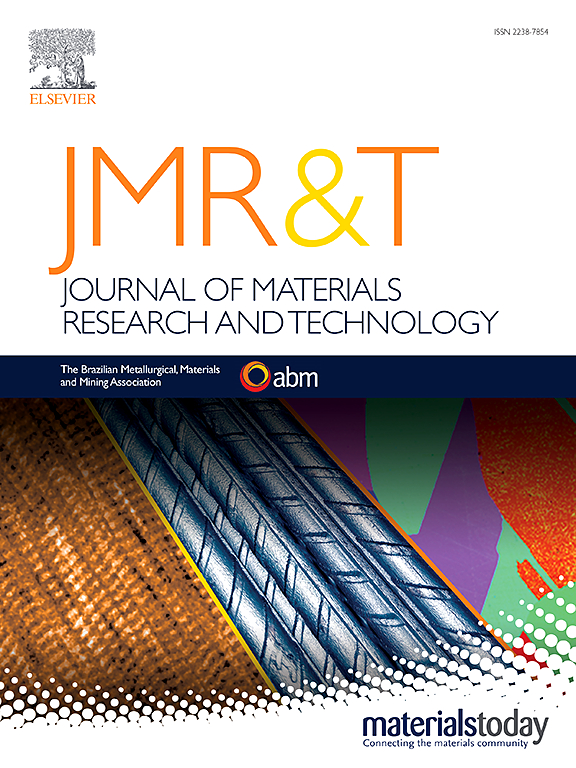电解驱动相选择溶解制备单晶高温合金纳米结构
IF 6.6
2区 材料科学
Q1 MATERIALS SCIENCE, MULTIDISCIPLINARY
Journal of Materials Research and Technology-Jmr&t
Pub Date : 2025-06-04
DOI:10.1016/j.jmrt.2025.06.025
引用次数: 0
摘要
微纳米结构广泛应用于传热、减少摩擦和减少阻力。本研究提出了一种新的电解质组成,并优化了电流密度,以在单晶高温合金上制备凹凸纳米结构。基于γ/γ′相的选择性溶解机制,精确地形成了两种类型的纳米结构:具有温和升高的γ相(~ 12 nm)和宽通道(~ 500 nm)的网格状结构,以及具有显著升高的γ′相(~ 54 nm)和窄通道(~ 50 nm)的柱状结构。结果显示不同的电化学响应取决于电解质和电流密度(0.5-20 A cm−2)。在氯化钠中,Cr和W等保护元素富集于γ相,使γ′相成为主要溶解途径,而在硝酸钠中,γ相优先溶解。水基溶液对电流密度的敏感性高,影响表面形貌,而乙二醇溶液的敏感性较低,有利于形成更光滑、更精细的纳米结构。因此,表面形态可以通过电解质驱动的选择性进行微调。此外,所得到的纳米结构为定制单晶合金的表面特性提供了可控的基础。本文章由计算机程序翻译,如有差异,请以英文原文为准。
Electrolyte-driven phase-selective dissolution for nanostructure fabrication on single-crystal superalloys
Micro-nanostructures are widely used for heat transfer, friction reduction, and drag reduction. This study proposes a new electrolyte composition and optimizes current density to fabricate concave–convex nanostructures on single-crystal superalloys. Based on the selective dissolution mechanism of γ/γ′ phases, two types of nanostructures are precisely formed: a grid-like structure with mildly raised γ phases (∼12 nm) and wide channels (∼500 nm), and a columnar structure with prominently raised γ′ phases (∼54 nm) and narrow channels (∼50 nm). The results reveal distinct electrochemical responses depending on the electrolyte and current density (0.5–20 A cm−2). In sodium chloride, protective elements such as Cr and W enrich in the γ phase, making the γ′ phase the primary dissolution pathway, whereas in sodium nitrate, the γ phase dissolves preferentially. Water-based solutions showed high sensitivity to current density, affecting surface morphology, while glycol-based solutions exhibited reduced sensitivity, facilitating smoother, more refined nanostructures. Thus, the surface morphology can be finely tuned through electrolyte-driven selectivity. Furthermore, the resulting nanostructures provide a controllable basis for tailoring surface characteristics in single-crystal alloys.
求助全文
通过发布文献求助,成功后即可免费获取论文全文。
去求助
来源期刊

Journal of Materials Research and Technology-Jmr&t
Materials Science-Metals and Alloys
CiteScore
8.80
自引率
9.40%
发文量
1877
审稿时长
35 days
期刊介绍:
The Journal of Materials Research and Technology is a publication of ABM - Brazilian Metallurgical, Materials and Mining Association - and publishes four issues per year also with a free version online (www.jmrt.com.br). The journal provides an international medium for the publication of theoretical and experimental studies related to Metallurgy, Materials and Minerals research and technology. Appropriate submissions to the Journal of Materials Research and Technology should include scientific and/or engineering factors which affect processes and products in the Metallurgy, Materials and Mining areas.
 求助内容:
求助内容: 应助结果提醒方式:
应助结果提醒方式:


